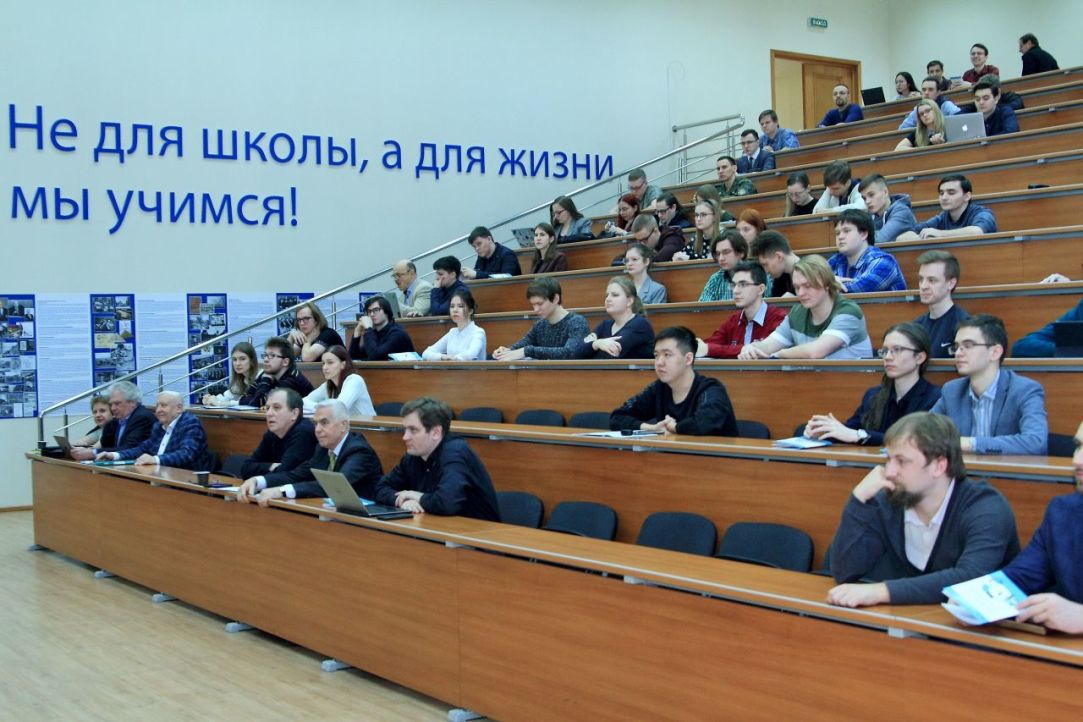Four Student Projects with Potential to Become High Tech Start-Ups

The Armensky Annual Inter-University Research and Technology Conference has concluded at MIEM HSE. Out of 200 submitted papers, 32 works by high school, undergraduate and graduate students participated in the event. The HSE News Service has prepared an overview of four HSE student-led projects that were awarded first-class diplomas.
Educational Technologies: Lab Work in a Smartphone
(Project name: ‘Developing software for studying the laws of physics in virtual reality with a performance analysis system’)
The market for educational technologies in Russia is one of the most promising. Infrastructure for children’s technology parks and invention parks (‘quantoriums’) with their high demand for modern VR equipment is developing particularly fast. According to Daria Romanova, third-year student at MIEM School of Computer Engineering, this situation is favourable for VR software development in Russia. The project team is virtualizing such physics lab works as ‘Parallel and series connection of conductors’ and ‘Studying radiation’, but in the future, the range of topics will be expanded.
‘In learning, the important factors include the user’s initial skills, the social context, and the stories they are familiar with – this is the foundation for an effective product. Without understanding these opportunities and limitations, we could not build intuitive mechanisms and types of interactions, as well as predict the outcome,’ said Daria. ‘That’s why we do not simply copy the lab works performed at school, but rather develop a new learning scenario. This includes systems for student safety, tools for teachers, and other elements of the ecosystem that surrounds teaching and learning.’ The developers’ mission includes building a more effective evaluation system, ‘unloading’ the teachers, customization of learning, and improving the motivation and the share of material that is learnt. The team works under the auspices of the HSE Laboratory of 3D Imaging and Computer Graphics.
Smart Devices: Make Tea without Leaving the Couch
(Project name: ‘Developing a software & hardware system to control hot drink preparation’)
Dmitry Filin, a fourth-year student at MIEM School of Electronic Engineering, decided to create a device that saves time for tea-making: the drink is made without a human using Internet of Things technology. The students printed parts for the prototype on a 3D printer, after which they designed and assembled printed circuit boards and coded the microcontrollers. For users’ convenience, Dmitry developed a mobile app for Android, which is used to control the device.
‘My work is relevant because people spend a lot of time making hot drinks. The consumer market lacks devices that can do it automatically. My device is unique, because it brews any kind of loose tea and is equipped with automated cup delivery system, which allows drinks to be made remotely. This means decreasing a considerable amount of time spent on this,’ said Dmitry.
Financial Technology: Recommendation Services in a Mobile Bank
(Project name: ‘Creating a concept of Receipts and Promotions service for an MIR payment system’)
Vladislav Belovitsky, a first-year student in the HSE Faculty of Computer Science School of Software Engineering, presented his concept of Receipts and Promotions service for an MIR payment system. The service analyses digital receipts and helps card holders not only track their expenses but obtain relevant offers from companies. Companies, in turn get the opportunity to customize their bonus programmes for specific users. Today, no other payment system offers such an opportunity.
Vladislav implemented his project at the HSE Faculty of Computer Science School of Software Engineering in collaboration with the National Payment Card System. The main idea of the service is to accumulate and analyse a huge array of data from electronic receipts. If the information on a person’s purchases is collected and analysed, the stores will be able to build individual bonus programmes, which will be reflected in the customer’s app ‘Hello MIR’. ‘Today, over 70 million people are using MIR cards in Russia and abroad. I believe that developing innovative services that will be able to bring the payment system, bank, stores, and customers to a new level is a very promising area,’ Vladislav believes.
Information Security: Advanced Technology in Cryptography
(Project name: ‘Developing optimal quantum circuits for generating Dike states’)
Sergey Kuznetsov, a third-year student of MIEM School of Applied Mathematics, developed optimal quantum circuits for generating Dike states. Quantum states are used for data encryption. While in non-entangled quantum states it is enough to transform each particle in the system independently, it is not that simple with entangled states. Measuring one particle of such a system would alter the state of another particle, even if it is far away. In his project, Sergey studied the approaches to getting an entangled, more reliable, quantum state from a simple non-entangled state.
‘In fact, every system that uses so-called public key encryption, from big banks’ security systems to popular messengers that are in everyone’s smartphone, is vulnerable to hacking with the use of entangled quantum states. The only thing that protects them from crashing is that due to physical difficulties, a full-scale quantum computer hasn’t been created yet, so we aren’t able to launch all these mechanisms to hack the complicated input data. But overcoming these difficulties is only a matter of time, so it is very important to study the whole potential of entangled states. This is our future, at least in terms of information security and transfer,’ Sergey said.
HSE News Service is grateful to MIEM students Irina Taraskina, Valeria Nemna, and Polina Podkopaeva for their help in preparing the text.

